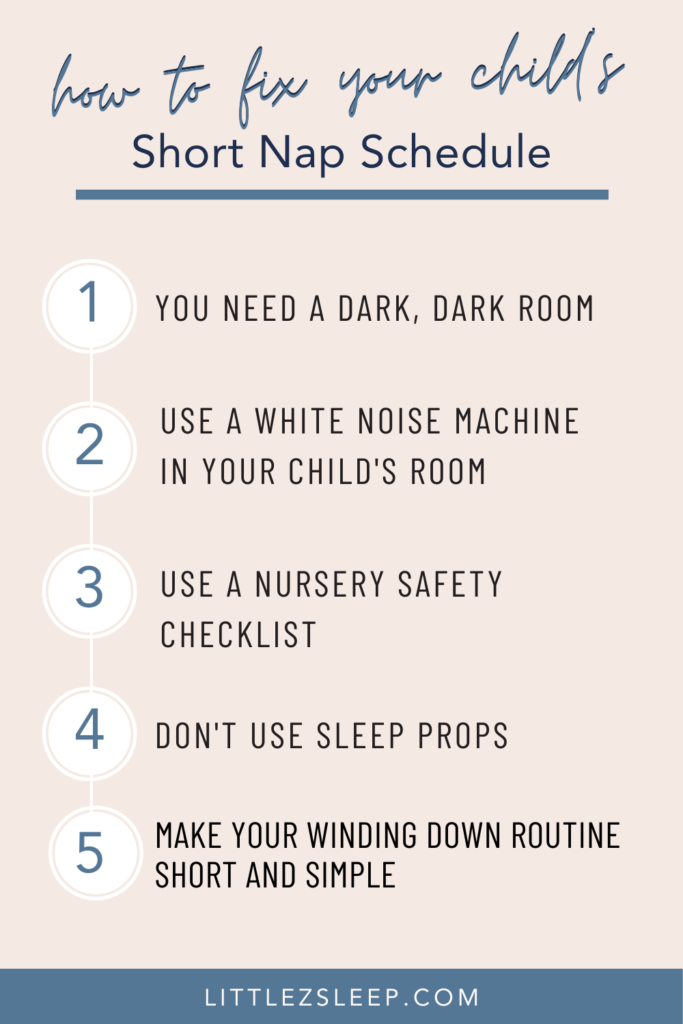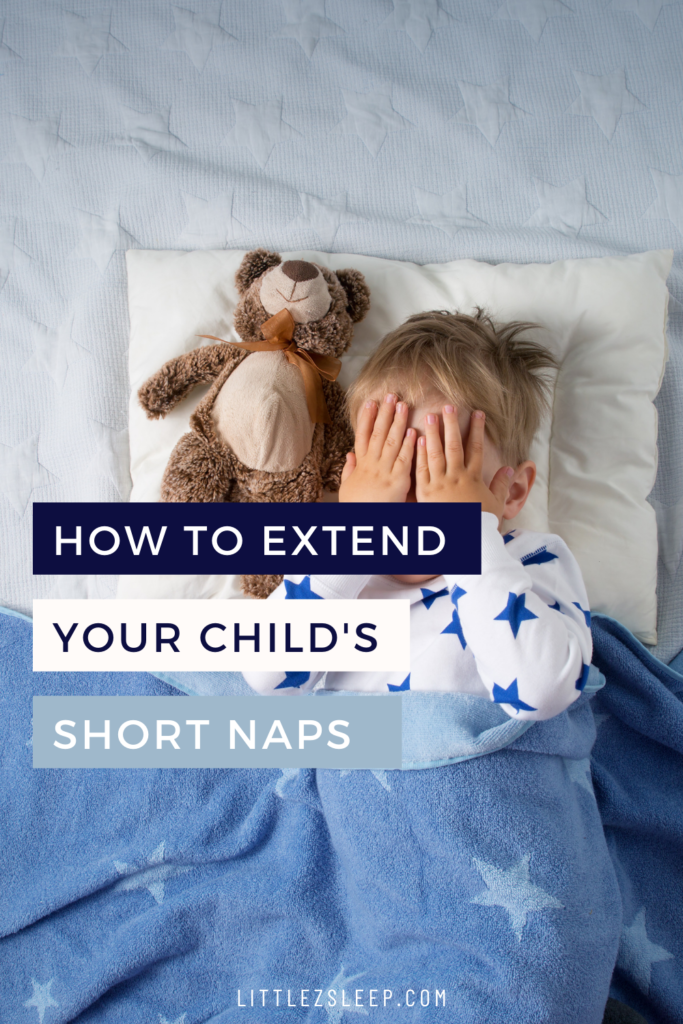Struggling with short naps or no naps at all with your child? As a pediatric sleep consultant, I’m sharing 5 tips to ensure a better nap schedule for your baby!
5 Tips for Troubleshooting a Better Nap Schedule
Did you know, there are five things that as a pediatric sleep consultant I have to check off of a list when I speak to my clients? Solving nap issues are complicated, but it starts with these five steps.
Before we even talk about a short nap strategy, awake windows, on-the-go naps, going from a bassinet to a crib, and all of those sleep transitions, there are five key checkpoints that I have to make sure we’re all on the same page to create a better sleep schedule.
Tip 1: You Need a Dark, Dark Room
This is the FIRST step for better naps. Your child’s room needs to be pitch black dark. When I am helping clients troubleshoot their short naps, I need to make sure that their nursery is 1000% dark!
Can you go into your child’s room, close the blinds, close the curtains, close the door, turn off the lights, sit down in a chair, let yourself acclimate to their room and then hold your hand in front of your face and SEE it? If you can see your hand, it’s too bright!
This is the most important step—because your child, even babies, can register sunlight through a closed eyelid. Now you may be thinking, “yeah, but my baby naps at daycare and it’s not dark there”. You’re right, but the naps aren’t good quality.
When we can control the nap environment, it is hugely important to have the room as dark as possible.
I have story after story of families who come to me, and on their sleep log, they record a 20-minute nap, 30-minute nap, and a 20-minute nap. And then, I ask them to send me a picture of the child’s room. Often, I can see a whole ring of light around the curtains and light underneath the door. There are a lot of ways we can solve this. I have two resources for you.
First, blackout blinds are a lifesaver!
Want to learn more about creating a dark room for bedtime? We have an entire blog post you can read about blackout blind solutions HERE.
Second, once you get the windows as dark as possible, use a fitted bed sheet around the door for pesky light filtering through. It is always worth double-checking the light that comes underneath the door if you’re in an old home. You will always have better sleep when it’s dark.
Tip 2: Use a White Noise Machine in Your Child’s Room
The second thing on my nap checklist is a white noise machine. I personally love the yoga sleep dohm classic. It is pure white noise at its finest. Now, I definitely want to speak about lullabies or music playing during naptime. I’ve heard from a lot of my toddler families who say their child likes listening to classical music or peaceful music when they sleep.
If it’s not broke, don’t fix it. If your toddler is a napping champ, and they listen to lullabies all night long, all nap long, then great! But if your toddler is not napping or is sleeping terribly, turn off the lullabies and crank up the constant white noise.
When you have a constant rhythmic white noise going like the Dohm classic or rain sound that is continuous, your child will not wake up when a track changes.
When a musical song ends and there’s dead space between song one and song two, it can cue your child to wake up. This is why I recommend a natural way to wake up a child is to turn the white noise off and their eyes typically open. The white continuous noise is key for great long naps.
Tip 3: Use a Nursery Safety Checklist
The third step on my napping checklist is performing safety checks. This might sound like it doesn’t belong on a nap checklist, but let me explain. I have worked with families who have had to run into their child’s room when they were trying to fall asleep for a nap (or woke up from a short nap) because the child was playing with the monitor cord hanging on the wall. This is distracting and unsafe for the child!
I also don’t recommend mobiles over the crib either—they are great for the changing table. Lastly, I absolutely don’t like toys like those cutesy aquariums that you can put on the side of a child’s crib, so they can entertain themselves in the middle of the night.
Any toys and distractions in the crib those need to go. Make sure your monitor is not mounted on the crib.
Go ahead and mount the monitor on the wall and ensure there are no loose items around your child’s crib and bassinet. That is so important. When you’re trying to improve naps, there cannot be any distractions.

(Pin this for later!)
Tip 4: Avoid Certain Sleep Props
When I’m working with a client and their naps are struggling, I go through my checklist:
- Is the room dark? (check!)
- Is there continuous white noise? (check!)
- Is the room safe? (check!)
- Are there sleep props that distract the child? (huh?)
Checking for sleep props is an important step. Is there anything that your child is depending on to help them fall back to sleep after a short nap?
Are they waking after 30 minutes because the pacifier fell out of their mouth?
Are they waking after 30 minutes because the rocking has ended?
What was happening that started their sleep journey…that is now totally missing when they wake later?
Through my sleep training programs I teach parents how to equip their children with self-soothing skills that *they* control. So when a short nap ends, they can roll over and go back to sleep, find their thumb, or grab their lovey and go back for more rest!
Tip 5: Check Their Expectations
The fifth item on my checklist is the biggest step. When your child is waking up from a short nap, what do they think is going to happen? Do they think they get to have a bottle? Are they expecting you to pat them to sleep?
What does your child believe that they need to go to sleep or to fall back asleep after just one sleep cycle?
If they are able to get up after a short nap and instantly get to watch a TV show or finish the nap in Mom’s bed….the short nap cycle probably won’t end!
I hope this has given you a lot to think about.
In this blog, you now have five things you can check off right now to ensure better naps!
Sweet Dreams,
Becca Campbell
Your Pediatric Sleep Consultant
Love this? Pin it for Later!

FLASH SALE
ONE WEEK ONLY
Keep sleep a thing on vacation with the Little Z's Travel Guide!